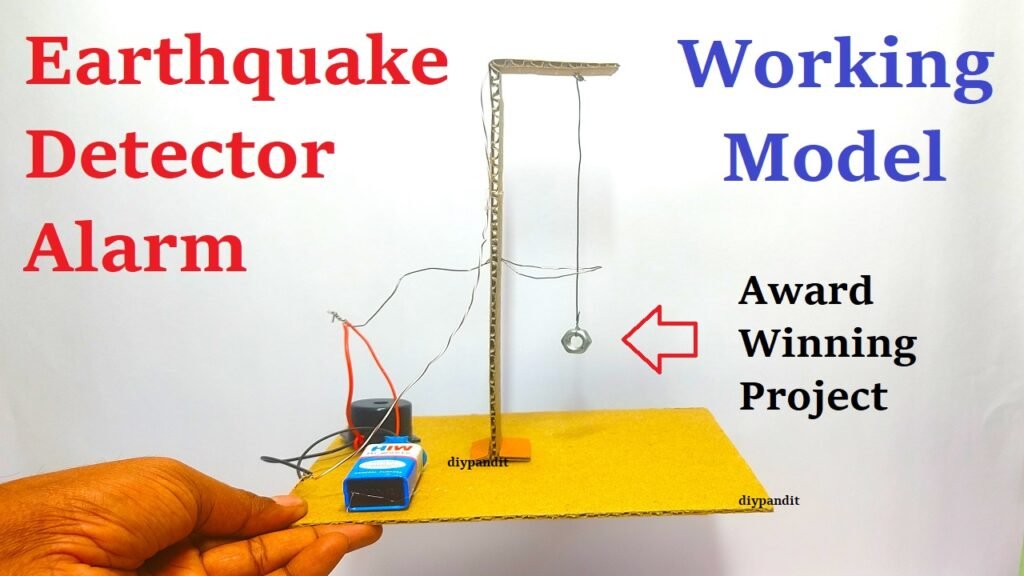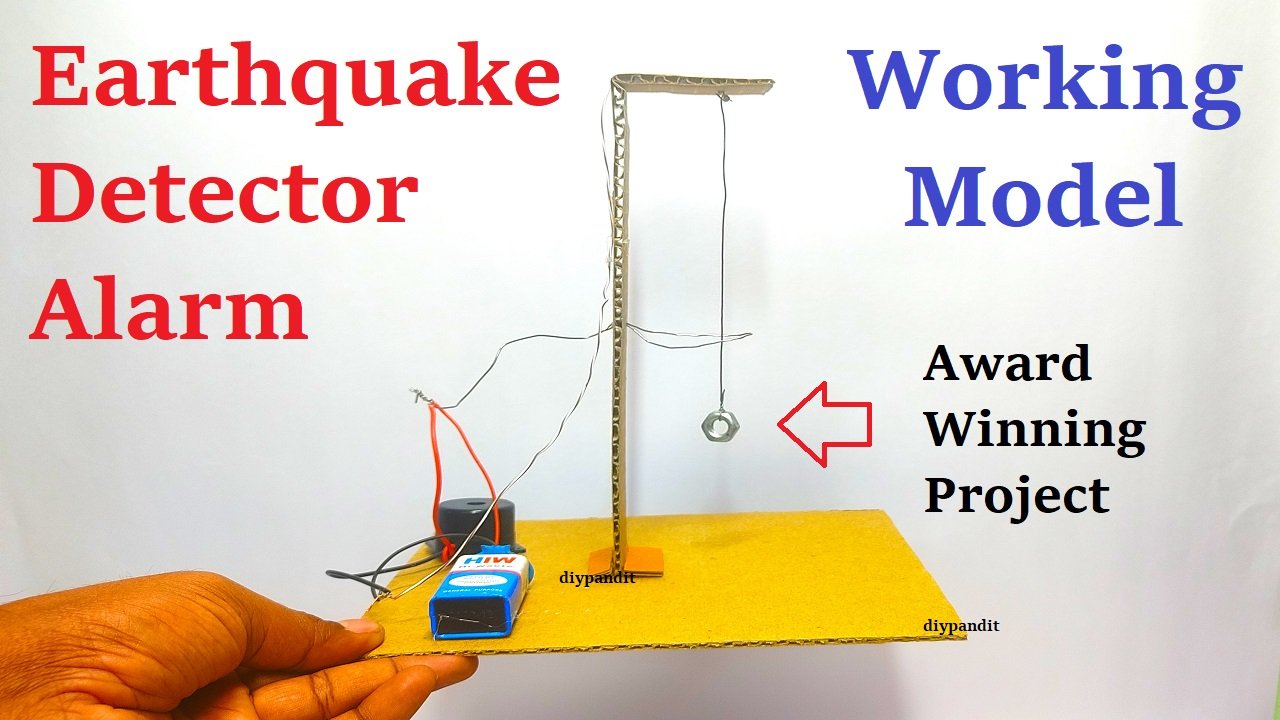This simple earthquake alarm demonstrates how basic principles of physics and electricity can be applied to create a practical device for detecting seismic activity.

Earthquake Alarm working model explanation
- Stable Base and Ramp: Cardboard provides a structure to hold the metal ball / Nut and conductive strips.
- Metal Ball: Acts as a movable conductor that responds to vibrations.
- Conductive Strips: Positioned so that the ball /Nut can complete the circuit by touching both simultaneously.
- Circuit Completion: During an earthquake, the ball /Nut moves and touches the strips, closing the circuit and triggering the buzzer.
How Earthquake Alarm Works?
- In normal conditions, the metal ball /Nut stays on the ramp or cradle, not touching the conductive strips simultaneously, so the circuit remains open, and the buzzer is off.
- During an earthquake or significant tremor, the vibration causes the metal ball /Nut to roll down the ramp or move in the cradle.
- As the ball rolls, it eventually touches both metal strips, completing the circuit.
- This closed circuit allows current to flow from the battery through the buzzer, activating it and producing a sound.

